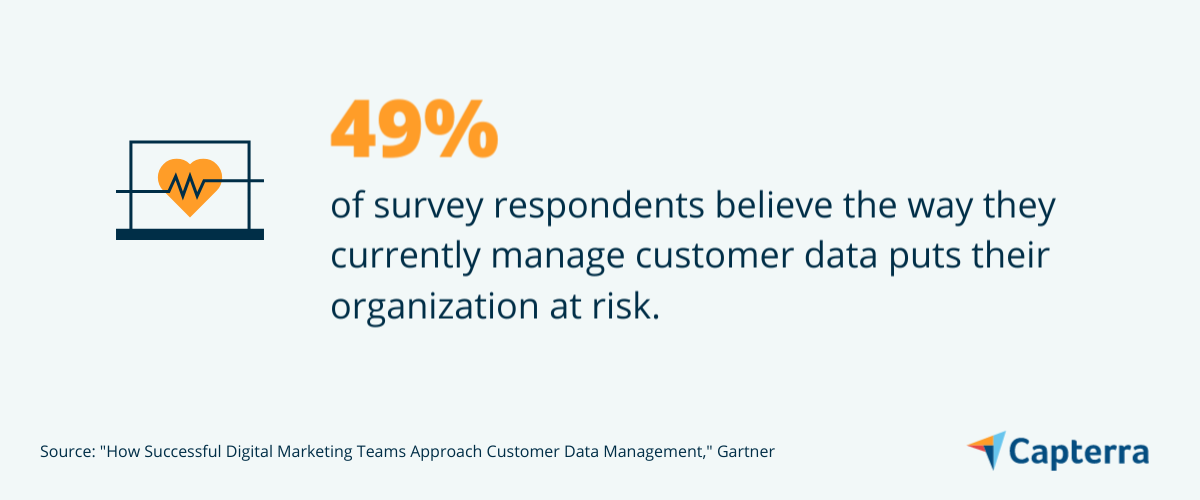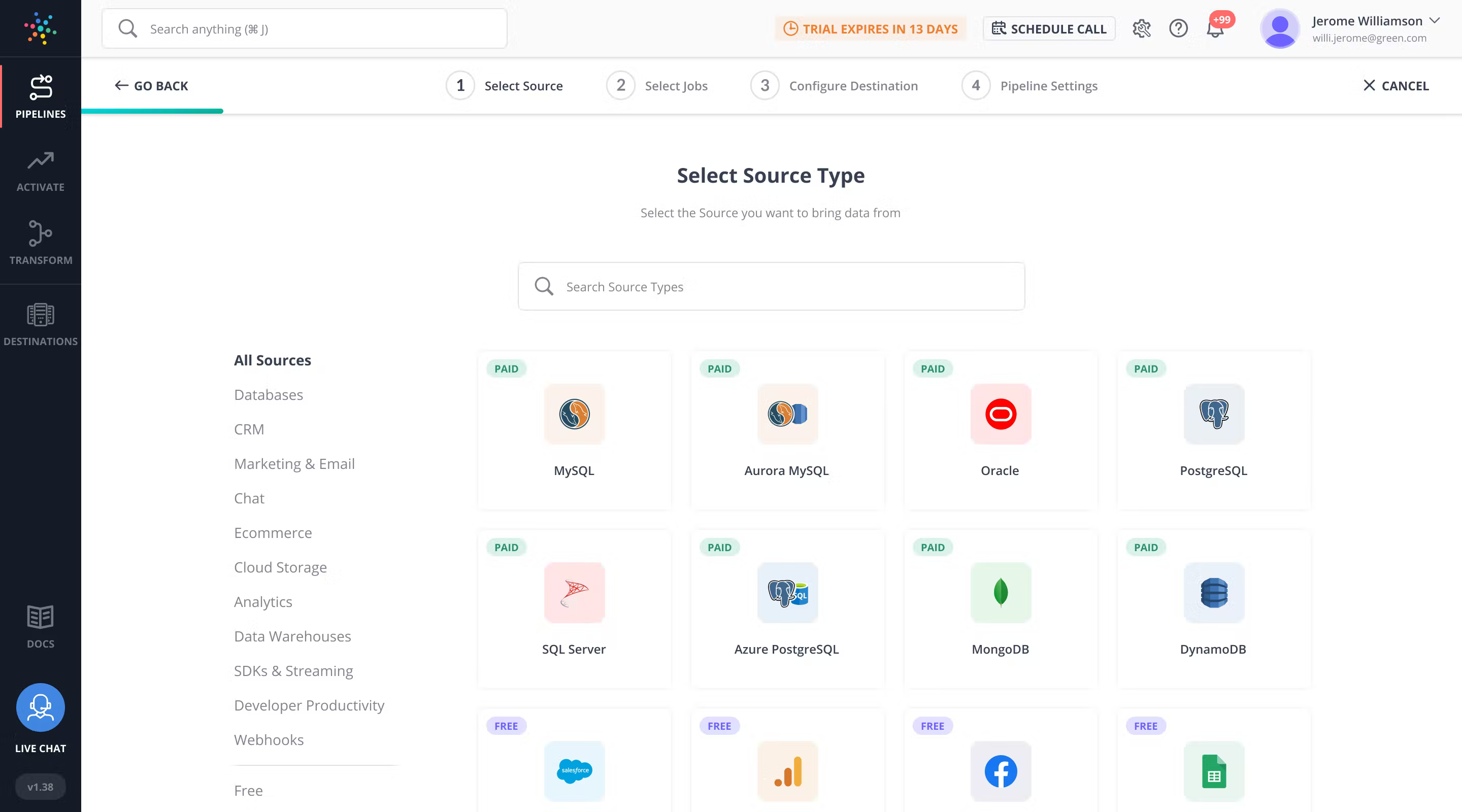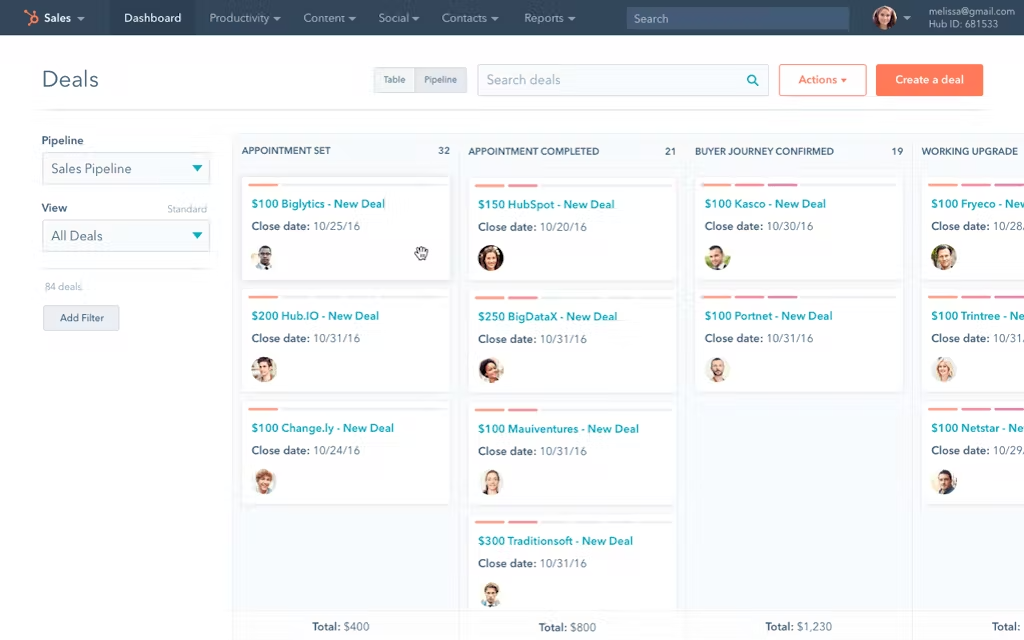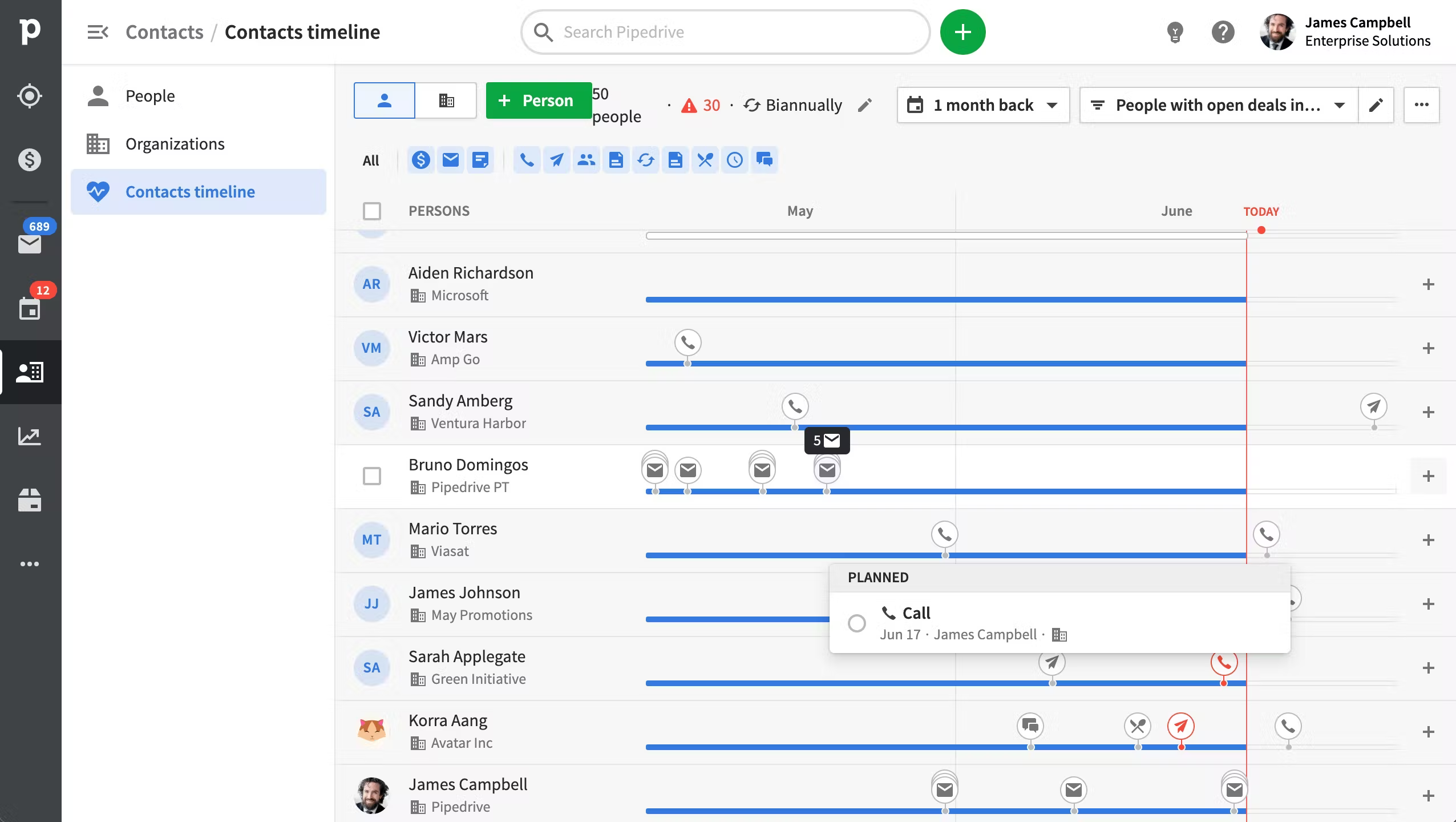Improve results and grow your business by making effective use of customer data.
As a small business marketer, you know customer data is important. For those with less experience, however, a beginner's guide can show you the best way to collect and use that data, especially if your organization has few explicit guidelines in place to do so.
Not only that—and perhaps more importantly—properly handling customer data can save you from negative business outcomes. In fact, according to Gartner research[1], 49% of survey respondents believe the way they currently manage customer data puts their organization at risk.

Integrating customer data into your marketing tools and analyzing it effectively will allow you to discover better targeting and segmentation opportunities, as well as potential paths to growing your business.
Below we’ll show you how to collect and store customer data, the benefits of effective management, and the tools to help you make the most out of your customer data.
What is customer data management?
Customer data management (CDM) is the approach a company takes to collect and examine customer data in order to identify, attract, and retain customers as well as gain marketing insights into their target audience. It’s also known as customer analytics.
This consumer data can range from basic account details like name, email address, and location to more comprehensive data such as buyer persona characteristics, purchase history, community sentiment, and any other information that helps you better understand your audience and gain valuable customer insight.
Interested in learning about general data management and governance instead?
Data management (DM) includes the rules, methods, and tools a business uses to process, store, organize, and deliver data. Good data management means ensuring relevant data is accessible across the range of devices and tools used by a business. Learn more here:
Benefits of advanced customer data management
The benefits of effective customer data management are manyfold, but we’ll focus on three of the most impactful as identified by Gartner research to start.
Measurable positive ROI
/ Key insight
Businesses with advanced customer data management processes are more likely to report seeing a measurable positive ROI from their customer data.
This means companies are also less likely to believe they are being put at risk by their management of customer data (remember that 49% of orgs feel this way)[1].
These findings are in comparison to organizations with intermediate or developing customer data management capabilities. If you’re a developing organization, focus on establishing methods to measure the success of your customer data collection efforts. If you’re an intermediate organization, focus on assessing opportunities to collect more first-party consumer data directly from your customers.
Improved cross-functional collaboration
Advanced customer data organizations are more likely to have resolved cross-functional collaboration and customer data management challenges than intermediate or developing ones.
As you develop your own customer data management processes you’ll begin enjoying these benefits as you progress, but the results are clear: Having a solidified customer data management system ensures you’re in a position to seamlessly take advantage of customer data between sales, marketing, and other functions.
Increased marketing and sales efficiency
Speaking of sales and marketing, a third key benefit of mature customer data management is simply an increase in the efficiency of these functions. If customer data is collected and stored in a way that’s easily accessible by all relevant parties, the time and energy needed to make good use of it is necessarily reduced.
This will not only manifest itself in your day-to-day operations but also as a progressive trend within your organization as it continues to grow. Much like working out a muscle group, your processes and cross-functional collaboration will grow stronger as you continue improving your customer data management efforts.
Customer data management challenges
While the benefits of CDM are worthwhile, there are also distinct challenges posed by implementing it. Let’s dive into some of those now, as well as some ways to combat them.
Data integration can be difficult
Unless you have a software stack specifically designed to integrate well together (which you should strive for), data integration can be a difficult process. With more than one data source, a lack of processes surrounding data entry, or disparate teams working in the same tools, there are bound to be layers of complexity to work through.
What can I do about this for my own business?
Take advantage of features in your martech stack to make data integration easier, explore new software options to bridge gaps in functionality, and/or hire a third-party service to help you make sense of the bigger picture.
Strained resources can produce less valuable insights
If you’re developing a CDM process for the first time, you’re likely working hard to merely collect and store your data, much less derive valuable insights from it. The learning curve and extra strain on normal marketing and sales processes might mean the effects of your CDM aren’t prominent at first.
What can I do about this for my own business?
Focus on establishing basic best practices that will serve you well in the long run. Avoid getting caught up in minutiae until you have the first iteration of a prescribed data management process. This includes aspects such as optimizing use of your CRM and training employees on data management best practices.
Accessing and analyzing data is a complex topic
As you may well have discovered by now, accessing and analyzing data in a meaningful way is a complex topic. In order to take full advantage, it’s important to ensure that your people and your processes are primed to make sense of data effectively.
What can I do about this for my business?
Utilize context-enriched analysis and data visualization to paint a more insightful picture. According to Capterra’s 2022 Data Visualization in Marketing Survey*, 92% of marketing decision makers could make better decisions in their daily work if they had a well-designed presentation of marketing data.
Resources needed to uplevel your customer data management
The ways in which you collect and store customer data are two of the most important aspects to consider when it comes to improving your CDM processes.
If you don’t properly collect data in the first place, you may be operating off of incorrect assumptions or an incomplete picture. Furthermore, if you don’t have an effective method of storing data, it will be difficult if not impossible to draw conclusions over time or take advantage of historical trends.
For a small business in the very early stages, this may take the form of spreadsheets. There are also a variety of software options available as you continue to scale and identify the need for more comprehensive features, including general data management platforms, customer data platforms, and customer relationship management (CRM) platforms.
1. Data management software

An example of the available software integrations within a data management platform (Source)
Data management software is a unified platform that collects, organizes, and analyzes business data from various channels, such as software apps, customer databases, and social media, presenting it in an easy-to-use format.
To learn more about data management software, including typical features, cost, and considerations when purchasing new software, visit Capterra Buyers Guide for Data Management Platforms.
Data management software offers data-driven insights for advertising agencies, marketers, and publishers by analyzing targeted marketing strategies from online and offline sources. It helps visualize the insights using graphs, tables, charts, and more.
Some of the benefits of data management software include reducing marketing expenses, streamlining access to your organization’s data, identifying new audiences, and encouraging a deeper understanding of data trends.
Using data management software for my small business
Data management software can be a powerful tool depending on the stage of growth your small business is in. Businesses that are in the beginning stages of exploring paid advertising for the first time have the opportunity to establish marketing processes at a lower cost from the outset and identify new audiences earlier in their growth.
2. Customer relationship management (CRM) software

An example of a sales dashboard with a CRM platform (Source)
CRM software is a technology solution that helps your business manage the data of current and potential customers with the goal of maintaining healthy relationships with them. It lets you track leads, send marketing emails, automate sales tasks, and create custom reports.
CRM software, in short, is a centralized repository of all customer-related information. It provides your sales, marketing, and customer service teams with a unified view of every client interaction (where the real power of CRM software lies).
As your small business grows, you may have more employees and teams who need access to accurate data without the need for cross-functional intervention. An effective CRM platform allows for this type of seamless sharing of customer data, the effect of which cannot be overstated.
Using CRM software for my small business
Put simply: Every business with customers should have some sort of CRM solution in place. It’s an excellent choice as a first piece of marketing software for a growing small business since it houses so many important details that can be accessed seamlessly by employees across your marketing and sales functions.
When shopping for CRM software, pay special attention to both the integration and implementation features of the platforms you’re vetting. Respectively, these processes allow you to either use data from your CRM within other types of marketing software or, in the case of implementation, migrate your existing data into your new CRM.
3. Customer data software

An example of a contacts timeline tool from a customer data platform (Source)
Unlike general data management platforms, customer data platforms are a software solution that helps collect and organize customer data from sources such as web forms, email, social media, and more.
The tool aggregates and structures this data to create individual customer profiles. The data is then used by other software systems for marketing campaign creation, analytics, audience segmentation, and advanced targeting such as the creation of lookalike audiences. This is where the magic really happens, as you can gain advanced insights into customer behavior that other types of software simply don’t offer.
Visit the Capterra Buyers Guide for Customer Data Platforms to gain a better understanding of the benefits, typical features, and cost of these platforms.
For instance, CRM solutions only store transactional data and do not give insight into user behavior, and data management platforms act as cookie-based solutions that mostly influence advertising.
The advantage of true customer data platforms lies in analyzing lifetime customer behavior. Moreover, CDPs are capable of influencing all types of marketing—email, SMS, and social— all the while retaining that data to build in-depth customer profiles.
Using CDM software for my small business
In the earlier stages of development, it may be more beneficial to enhance your use of CRM tools as an all-in-one solution vs. using a dedicated CDM platform. As your understanding of CDM grows and you have more resources—especially as you work to build buyer personas and utilize advanced audience targeting—it will become more feasible to adopt as a solution.
Create customer data management guidelines to tie it all together
While 58% of developing organizations lack an organization-wide strategy for managing customer data[1], you now have the basis of knowledge you need to avoid being part of that statistic.
Armed with effective means of collecting and storing customer data and a litany of tips and tech suggestions to proceed confidently, you can rest assured that—as your business scales—so will the positive results from your customer data management.
There’s no need to put your organization at risk by doing any less. Start small by analyzing the way you currently handle customer data, and you’ll be well on your way to crafting a more effective long-term strategy.
Hungry for more marketing resources to help your small business grow? Check the Capterra blog regularly for new content, starting with these:
